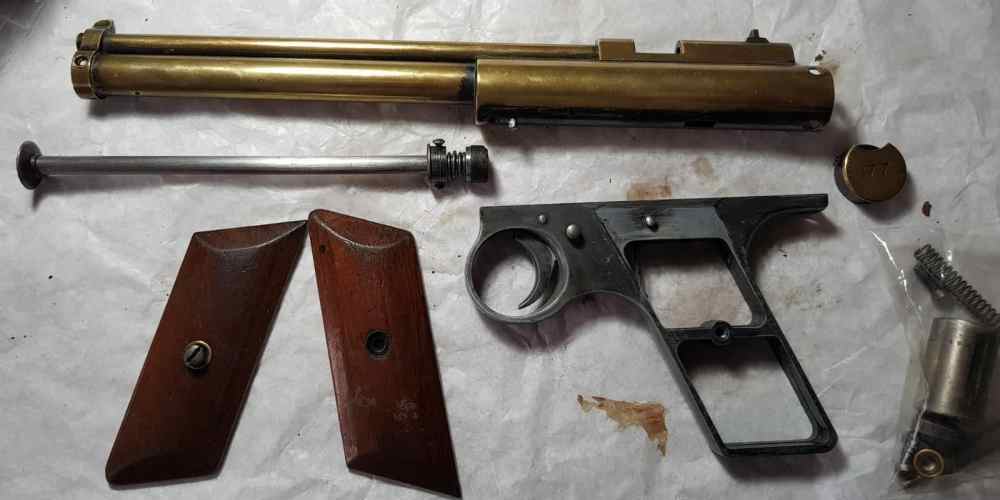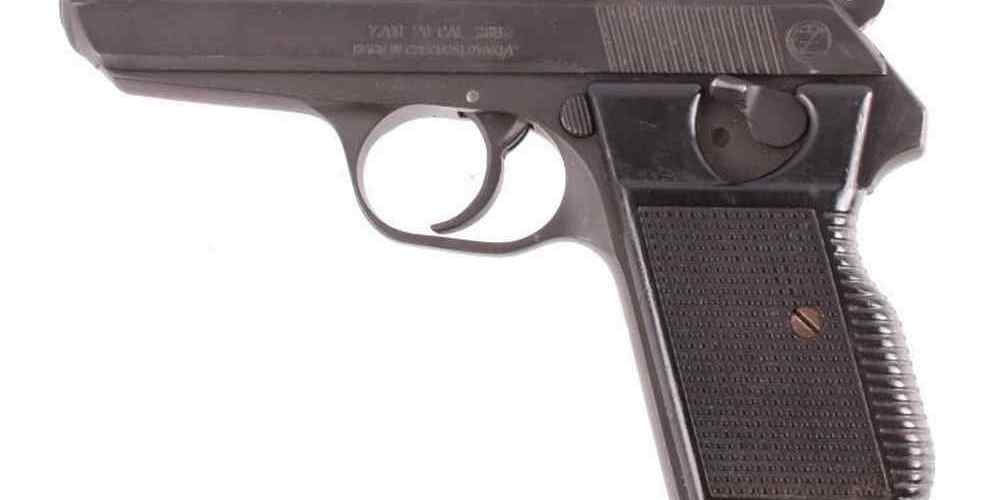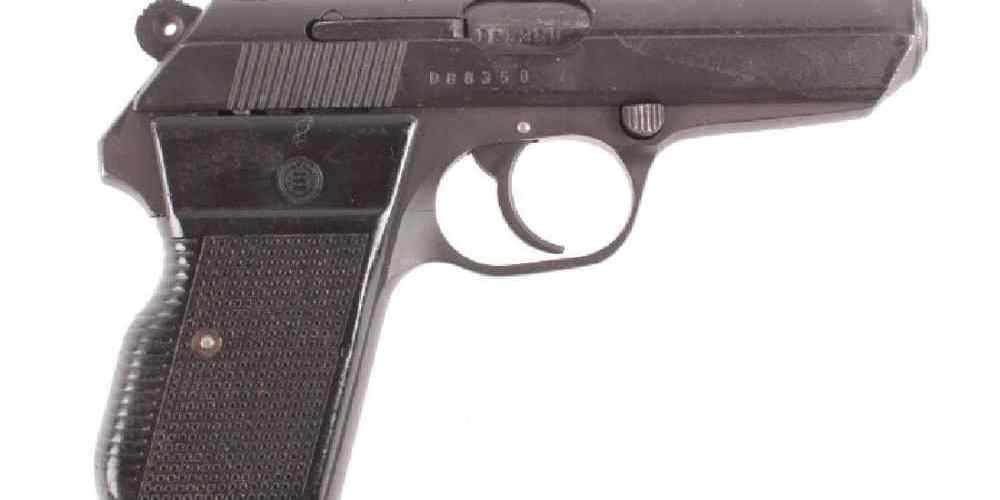“Stabilize your shot with precision guide rods for superior recoil management in semi-auto pistols.”
Benefits of Upgrading Guide Rods in Semi-Auto Pistols
When it comes to semi-automatic pistols, one of the key components that can greatly affect performance is the guide rod. The guide rod plays a crucial role in managing recoil, which is the backward force generated when a bullet is fired. Upgrading the guide rod in your semi-auto pistol can have a number of benefits, including improved accuracy, reduced felt recoil, and increased durability.
One of the main benefits of upgrading the guide rod in your semi-auto pistol is improved accuracy. A high-quality guide rod can help to stabilize the barrel and slide during firing, resulting in more consistent shot placement. This is especially important for competitive shooters or those who rely on their pistol for self-defense. By reducing the movement of the barrel and slide, a upgraded guide rod can help you stay on target and make more accurate shots.
In addition to improved accuracy, upgrading the guide rod in your semi-auto pistol can also help to reduce felt recoil. Recoil can be a significant factor in how well you are able to control your pistol, especially during rapid fire or when shooting powerful loads. A high-quality guide rod can help to absorb some of the energy generated by the recoil, making it easier to stay on target and recover for follow-up shots. This can be particularly beneficial for shooters with weaker hand strength or those who are sensitive to recoil.
Another benefit of upgrading the guide rod in your semi-auto pistol is increased durability. Factory guide rods are often made from plastic or other low-quality materials that can wear out over time, especially with extended use. By upgrading to a metal guide rod, you can increase the lifespan of your pistol and ensure that it continues to function reliably for years to come. Metal guide rods are more resistant to wear and tear, making them a smart investment for anyone who uses their pistol regularly.
In addition to these benefits, upgrading the guide rod in your semi-auto pistol can also provide a more custom look and feel. Many aftermarket guide rods are available in a variety of colors and finishes, allowing you to personalize your pistol to suit your preferences. Some guide rods also feature added features such as fluting or serrations, which can improve grip and make it easier to manipulate the slide. By upgrading your guide rod, you can not only improve performance but also enhance the overall aesthetics of your pistol.
In conclusion, upgrading the guide rod in your semi-auto pistol can have a number of benefits, including improved accuracy, reduced felt recoil, increased durability, and a more custom look and feel. Whether you are a competitive shooter, a self-defense enthusiast, or just someone who enjoys shooting for fun, upgrading your guide rod is a simple and effective way to enhance the performance of your pistol. With so many options available on the market, there is sure to be a guide rod that meets your needs and preferences. So why wait? Upgrade your guide rod today and experience the difference for yourself.
How Guide Rods Affect Recoil Management in Pistols
When it comes to semi-automatic pistols, one of the key components that can greatly affect recoil management is the guide rod. The guide rod plays a crucial role in the functioning of a semi-auto pistol, helping to control the movement of the slide and ensuring smooth operation. Understanding how guide rods work and their impact on recoil management can help shooters make informed decisions when it comes to choosing the right guide rod for their pistol.
Guide rods are typically found in the slide assembly of a semi-automatic pistol and serve to guide the movement of the slide as it cycles back and forth during firing. The guide rod helps to keep the slide aligned with the frame of the pistol, preventing it from tilting or binding during operation. This ensures that the pistol functions reliably and consistently, allowing for accurate shooting.

There are two main types of guide rods commonly used in semi-automatic pistols: captured guide rods and uncaptured guide rods. Captured guide rods are typically found in modern pistols and are secured in place by a spring that surrounds the guide rod. This design helps to keep the guide rod in place and prevents it from coming loose during firing. Uncaptured guide rods, on the other hand, are not secured by a spring and can be removed from the pistol more easily. While both types of guide rods can be effective in controlling recoil, captured guide rods are generally considered to be more reliable and durable.
The material used to make the guide rod can also have an impact on recoil management. Guide rods are commonly made from steel, aluminum, or polymer. Steel guide rods are the most durable and can help to reduce felt recoil by adding weight to the front of the pistol. Aluminum guide rods are lighter than steel guide rods and can help to reduce overall weight, making the pistol easier to carry and handle. Polymer guide rods are the lightest option and are often used in compact or lightweight pistols. While polymer guide rods may not be as durable as steel or aluminum guide rods, they can still be effective in controlling recoil.
In addition to material and design, the length of the guide rod can also affect recoil management. Longer guide rods can help to reduce muzzle flip and felt recoil by providing more support for the slide as it cycles. Shorter guide rods, on the other hand, may allow for faster cycling of the slide but can result in increased felt recoil. Shooters should consider their shooting style and preferences when choosing the length of the guide rod for their pistol.
Overall, guide rods play a critical role in recoil management in semi-automatic pistols. By understanding how guide rods work and their impact on pistol performance, shooters can make informed decisions when it comes to choosing the right guide rod for their pistol. Whether you prefer a captured or uncaptured guide rod, steel, aluminum, or polymer construction, or a longer or shorter guide rod, there are options available to suit your needs. Experimenting with different guide rods can help you find the perfect balance of recoil control and performance for your pistol.
Comparing Different Types of Guide Rods for Semi-Auto Pistols
When it comes to semi-automatic pistols, one of the key components that can greatly affect the performance of the firearm is the guide rod. The guide rod plays a crucial role in managing recoil and ensuring the smooth operation of the pistol. There are several different types of guide rods available on the market, each with its own set of advantages and disadvantages. In this article, we will compare some of the most common types of guide rods used in semi-auto pistols.
One of the most popular types of guide rods is the standard steel guide rod. These guide rods are typically made from stainless steel or carbon steel and are known for their durability and reliability. Steel guide rods are able to withstand the high pressures and forces generated during the firing process, making them a popular choice among shooters who prioritize reliability above all else. Additionally, steel guide rods are relatively inexpensive and easy to find, making them a practical choice for many gun owners.
Another common type of guide rod is the polymer guide rod. These guide rods are made from high-strength polymers such as nylon or Delrin and are known for their lightweight and corrosion-resistant properties. Polymer guide rods are often used in compact and lightweight pistols where reducing weight is a priority. While polymer guide rods may not be as durable as steel guide rods, they are still able to effectively manage recoil and provide reliable performance.
One of the newer types of guide rods to hit the market is the captured guide rod. Captured guide rods consist of a single piece design that incorporates both the guide rod and recoil spring into one unit. This design helps to ensure that the recoil spring remains properly aligned and centered during the firing process, resulting in smoother operation and reduced recoil. Captured guide rods are often found in modern striker-fired pistols and are praised for their ease of maintenance and installation.
In addition to the material and design of the guide rod, the length of the guide rod can also have an impact on the performance of the pistol. Longer guide rods are often used in competition pistols where reducing muzzle flip and improving accuracy are top priorities. The added weight and length of a longer guide rod can help to stabilize the pistol during rapid fire and make follow-up shots more accurate. On the other hand, shorter guide rods are often used in compact and concealed carry pistols where reducing overall size and weight are more important.
When choosing a guide rod for your semi-auto pistol, it is important to consider your specific needs and preferences. Steel guide rods are a solid choice for shooters who prioritize durability and reliability, while polymer guide rods are a good option for those looking to reduce weight and corrosion. Captured guide rods offer the benefits of both steel and polymer guide rods in a single unit, making them a versatile choice for many shooters. Ultimately, the best guide rod for your pistol will depend on your individual shooting style and preferences.
Tips for Proper Maintenance of Guide Rods in Pistols
Guide rods are an essential component of semi-automatic pistols, playing a crucial role in managing recoil and ensuring the smooth operation of the firearm. Proper maintenance of guide rods is essential to ensure the longevity and performance of your pistol. In this article, we will discuss some tips for proper maintenance of guide rods in pistols.
One of the most important aspects of maintaining guide rods is regular cleaning. Over time, dirt, debris, and fouling can build up on the guide rod, affecting its performance. To clean the guide rod, simply remove it from the pistol and wipe it down with a clean cloth or brush. Be sure to pay special attention to the areas where the guide rod interfaces with the slide and barrel, as these are common areas for buildup.
In addition to cleaning, it is also important to inspect the guide rod for any signs of wear or damage. Check for any cracks, bends, or other abnormalities that could affect the performance of the guide rod. If you notice any issues, it is important to replace the guide rod immediately to prevent any further damage to your pistol.
Another important aspect of guide rod maintenance is lubrication. Proper lubrication is essential to ensure smooth operation and reduce wear on the guide rod. When lubricating the guide rod, be sure to use a high-quality gun oil or grease that is specifically designed for firearms. Apply a small amount of lubricant to the guide rod and wipe off any excess to prevent buildup.
It is also important to ensure that the guide rod is properly installed in the pistol. Improper installation can lead to malfunctions and damage to the firearm. When reinstalling the guide rod, be sure to follow the manufacturer’s instructions carefully and ensure that it is securely in place before using the pistol.
In addition to regular maintenance, it is also important to replace the guide rod periodically. Over time, guide rods can wear out and become less effective at managing recoil. It is recommended to replace the guide rod every 5,000-10,000 rounds, depending on the manufacturer’s recommendations and the type of ammunition used.
By following these tips for proper maintenance of guide rods in pistols, you can ensure the longevity and performance of your firearm. Regular cleaning, inspection, lubrication, and replacement of guide rods are essential to ensure smooth operation and reliable performance. Remember to always follow the manufacturer’s recommendations and guidelines for maintaining your pistol to keep it in top condition.
In conclusion, guide rods play a crucial role in managing recoil and ensuring the smooth operation of semi-automatic pistols. Proper maintenance of guide rods is essential to ensure the longevity and performance of your firearm. By following these tips for proper maintenance, you can keep your pistol in top condition and enjoy reliable performance for years to come.
The Role of Guide Rods in Improving Accuracy and Control in Semi-Auto Pistols
When it comes to shooting a semi-automatic pistol, accuracy and control are key factors that can make a significant difference in your shooting performance. One often-overlooked component that plays a crucial role in achieving these goals is the guide rod. In this article, we will explore the importance of guide rods in semi-auto pistols and how they contribute to recoil management, ultimately improving your shooting experience.
Guide rods are an essential part of the recoil system in semi-automatic pistols. They serve as a guide for the recoil spring, helping to ensure smooth and consistent cycling of the slide. By providing a stable platform for the recoil spring to operate on, guide rods help to reduce felt recoil and muzzle flip, allowing for faster follow-up shots and improved accuracy.
One of the key benefits of using a high-quality guide rod in your semi-auto pistol is improved recoil management. When the slide cycles, the recoil spring compresses and then expands, absorbing the energy generated by the firing of the round. A well-designed guide rod helps to guide this movement, ensuring that the recoil spring operates efficiently and effectively.
In addition to reducing felt recoil, guide rods also play a role in controlling muzzle flip. Muzzle flip, or muzzle rise, refers to the upward movement of the barrel when the pistol is fired. Excessive muzzle flip can make it difficult to maintain sight alignment and can slow down your follow-up shots. By providing a stable platform for the recoil spring, guide rods help to minimize muzzle flip, allowing for faster and more accurate shooting.
There are several types of guide rods available for semi-auto pistols, including steel, tungsten, and polymer. Steel guide rods are durable and provide excellent support for the recoil spring, making them a popular choice among shooters. Tungsten guide rods are heavier than steel guide rods, which can help to further reduce felt recoil and muzzle flip. Polymer guide rods are lightweight and affordable, but may not offer the same level of durability as steel or tungsten guide rods.
When choosing a guide rod for your semi-auto pistol, it is important to consider factors such as material, weight, and compatibility with your pistol model. Some pistols come with factory-installed guide rods, while others may benefit from aftermarket upgrades. It is always a good idea to consult with a knowledgeable gunsmith or firearms expert to determine the best guide rod option for your specific needs.
In conclusion, guide rods play a crucial role in improving accuracy and control in semi-auto pistols. By providing a stable platform for the recoil spring, guide rods help to reduce felt recoil and muzzle flip, allowing for faster follow-up shots and improved shooting performance. Whether you are a competitive shooter or a recreational gun owner, investing in a high-quality guide rod can make a significant difference in your shooting experience. So next time you hit the range, consider the role of guide rods in your semi-auto pistol and see how they can help you take your shooting to the next level.





